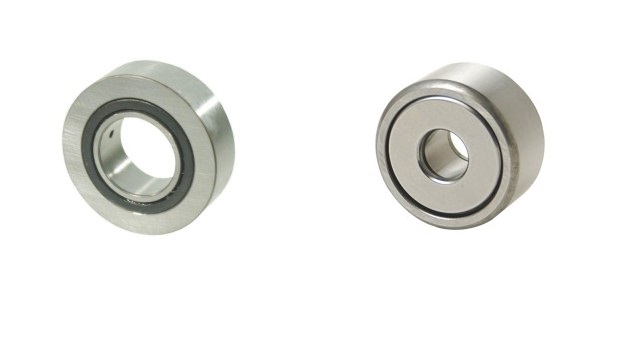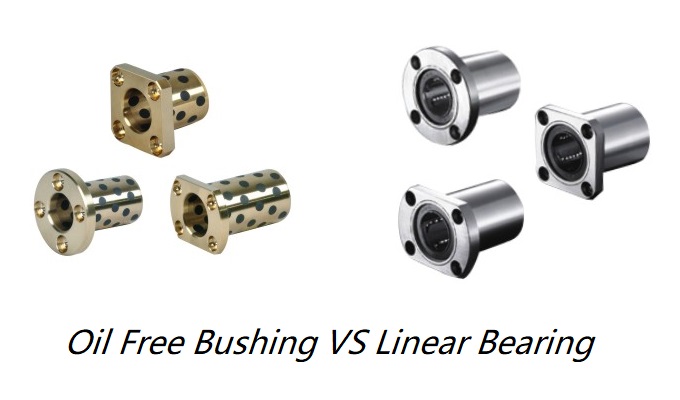This article serves as your comprehensive guide to Installation Instructions for Various Bearings. We will explore the essential steps and techniques required to install different types of bearings correctly. So, let's dive into the world of bearings and discover the best practices for their installation.
Installation and Use of Roller Bearings
1. The force should be applied even when installing bearings, and direct hammering should be avoided. If there is a significant interference fit, the bearing should be heated in an air-controlled furnace or an oil bath with strict temperature control, not exceeding 120°C.
2. Bearings with nylon retainers can work continuously and stably in the temperature range of -40°C to 120°C and should not exceed 4 hours of operation at 150°C, with brief temperature peaks reaching up to 180°C.
3. The storage room for bearings should be clean and dry and not be shared with chemical products. The relative humidity should not exceed 65%, and bearings should not be stored directly on the ground.

Installation and Use of Deep Groove Ball Bearings
1. The force should be applied even when installing bearings, and direct hammering should be avoided. If there is a significant interference fit, the bearing should be heated in an air-controlled furnace or an oil bath with strict temperature control, not exceeding 120°C.
2. Bearings with nylon retainers can work continuously and stably in the temperature range of -40°C to 120°C and should not exceed 4 hours of operation at 150°C, with brief temperature peaks not exceeding 180°C.
3. The storage room for bearings should be clean and dry and not be shared with chemical products. The relative humidity should not exceed 65%, and bearings should not be stored directly on the ground.
4. Bearings in storage should be cleaned and re-oiled every year.

Installation and Use of Angular Contact Ball Bearings
1. The force should be applied even when installing bearings, and direct hammering should be avoided. If there is a significant interference fit, the bearing should be heated in an air-controlled furnace or an oil bath with strict temperature control, not exceeding 100°C.
2. Bearings with nylon retainers can work continuously and stably in the temperature range of -40°C to 120°C and should not exceed 4 hours of operation at 150°C, with brief temperature peaks reaching up to 180°C.
3. The storage room for bearings should be clean and dry and not be shared with chemical products. The relative humidity should not exceed 65%, and bearings should not be stored directly on the ground.

Installation and Use of Spherical Roller Bearings
1. Users should choose suitable fits and radial clearances for the bearings according to the usage requirements. Verify the bearing designation after unpacking.
2. If grease needs to be added to the bearing before installation, the grease must be cleaned and applied appropriately.
3. During installation, it is advisable not to directly hammer the inner and outer ring end faces and rollers to avoid cracking the inner ring or damaging the races. Typically, users should heat the bearing in mineral oil to 90°C to 100°C and immediately mount it on the shaft. Avoid localized heating when installing bearings; in case of difficult "hot mounting," users should use special sleeves for installation.
4. Bearings should have effective seals and dust protection during use, and lubrication should not be interrupted.
5. The storage room for bearings should be clean, dry, and free from environmental pollution, and bearings should not be stored directly on the ground. Bearings in storage for more than one year must be cleaned and re-greased.
Installation and Use of Thrust Spherical Roller Bearings
1. When installing bearings, clean the seal and apply high-quality lubricating oil.
2. When installing bearings, apply force evenly and avoid hammering. If there is a significant interference fit, heat the bearing in mineral oil to 90°C to 100°C and install it immediately.
3. The storage room for bearings should be clean tidy, and maintain a relative humidity not exceeding 65%.
4. Bearings in storage should be cleaned and re-greased every year, and the sealed packaging should be kept in good condition.
5. When using bearings, ensure effective sealing and dust protection, and regularly inspect their performance.
Installation and Use of Cylindrical Roller Bearings
1. This bearing is separable, and users can adjust the clearance during installation.
2. Before using the bearing, clean it with gasoline or kerosene and ensure proper lubrication.
3. During installation, press the bearing into the component and avoid striking it.
4. Store the bearings in a clean, well-ventilated area, avoiding moisture. For long-term storage, regularly protect them from rust.
Installation and Use of Thrust Ball Bearings
1. When installing bearings, remove the bearing seal, clean it, and apply clean, high-quality lubricating oil.
2. When installing bearings, apply force evenly and avoid hammering. If there is a significant interference fit, heat the bearing in mineral oil to 90°C to 100°C and install it immediately.
3. The storage room for bearings should be clean tidy, and maintain a relative humidity not exceeding 65%.
4. Bearings in storage should be cleaned and re-greased every year, and the sealed packaging should be kept in good condition.
5. When using bearings, ensure effective sealing and dust protection, and regularly inspect their performance.
Installation precautions
- For bearings with clearance fits, applying a thin layer of anti-seize corrosion inhibitor on the mating surfaces is recommended to prevent friction corrosion between mating surfaces.
- Applying force during installation should never be transferred from one bearing ring to another through the rolling elements, as this can damage the raceways. Direct striking of the bearing rings, retainers, rolling elements, or seals should be avoided.
- Installation of an eccentric collar:
- First, place the eccentric collar onto the eccentric step inside the bearing inner ring.
- Rotate it by hand in the direction of the shaft's rotation to secure it.
- Then, insert a small iron rod or a tool to engage with the groove or hole on the eccentric collar.
- Use a hammer to tap the iron rod toward the shaft's rotation, ensuring a firm installation.
- Finally, tighten the internal hexagonal screw on the eccentric collar.
- Do not tighten the bolts securing the bearing housing immediately. Allow the outer bearing race to rotate inside the bearing housing. Once done, tighten the bearing housing bolts securely. Follow the same procedure for the other end of the shaft, where another bearing and housing are installed. Rotate the shaft a few turns to allow the bearings to naturally find their correct positions.
- Apply lubricating oil between the bearing housing and the shaft to the mating surfaces. Insert the bearing into the bearing housing. Then, slide the assembled bearing and housing onto the shaft and push it to the desired location for installation.
Installation Tips
Tip 1: Using Copper Rod and Manual Hammering for Installation
It is a simple method for installing small and medium-sized bearings. When the inner ring of the bearing is tight, and the outer ring is loose, place a copper rod against the inner ring of the bearing and use a hammer to tap the copper rod directly. It will slowly install the bearing onto the shaft.
Tip 2: Using Sleeves for Installation
This method is similar in principle to using a copper rod for installation. It involves pressing a sleeve directly onto the end face of the bearing (pressing the inner ring end face when the bearing is mounted on the shaft or pressing the outer ring end face when the bearing is mounted in a housing). It ensures even distribution of force on the entire installed bearing ring face. It can be used with a press, making it a time-saving and reliable installation method. The sleeve used for installation should be made of soft metal (copper or low-carbon steel pipe is suitable).
If the bearing is mounted on a shaft, the sleeve's inner diameter should be slightly larger than the shaft diameter by 1-4mm. If the bearing is mounted in a housing bore, the sleeve's outer diameter should be slightly smaller than the bearing's outer diameter.
Tip 3: Press-Fit Installation
The installation pressure should be directly applied to the interference fit bearing ring face; otherwise, it may cause compression damage to the bearing's working surface, leading to premature bearing failure.
Tip 4: Heat Installation
Heating the bearing can facilitate installation for bearings with significant interference fits or large-sized bearings. Using the principle of thermal expansion and contraction, heat the bearing in an oil bath to a temperature below 100°C (80-90°C is suitable). High temperatures can lead to annealing of the bearing's raceways and rolling elements, affecting hardness and wear resistance, reducing bearing life, and causing premature failure.
Note: In all cases, direct hammering of the bearing rings, retainers, rolling elements, or seals should be avoided during installation.





